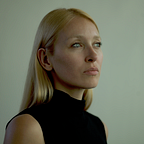‘How To Foster Global Impact’ by Annesofie Norn, UN Live — Museum for the United Nations
This is a summary of Annesofie Norn’s speech at ‘Museums Facing Extinction’ Conference on November 16th 2020.
Culture is extraordinarily powerful.
In the unification of museums worldwide, what matters is localization. Through experimental and creative partnerships in more than 30 countries in the last few, Annesofie Norn, curator at UN Live — Museum for the United Nations, and her team have discovered that to reach the centre of people’s passion, identity, and heart, we need to begin at the local level.
The “local” can be likened to a person’s roots — where profound personal change happens via culture, which everyone is a part of. Culture is a crucial driver to change because it makes us who we are as people, makes us behave in specific ways, and is the starting point for any fundamental change in the world.
Culture is also extra-ordinarily untapped
Culture brings us experiences of joy and connectedness. But if we want to make museums true agents of change, then we also need to think about the connections between the experience, the project, or the exhibition and the pathways. What comes after? What can we do to help turn passion and excitement into changed behaviour?
“Recognize that every interaction you have is an opportunity to make a positive impact on others.” Shep Hyken
Think about a global mission consisting of just museums where each of the individual museums would use local physical presence, historical relevance, societal trust, and the ability to make the world’s most significant issues relatable through experiences connecting people across space and time.
Towards coalitions of diversity
If we all had the opportunity to enable people, including museums and their workers, to pledge and sustain action — not as individuals this time, but as a group, together, we would drive change and movement. As a sector, Annesofie suggests that we all need to take a stand together, the small and the big, at the global level.
Through a platform called Count Us In, for the first time, we are witnessing a coalition of diversity as different cultures, faiths, cities, and businesses have come together in a never before seen global campaign in a bid to inspire billions of people to take action and employ practical steps in the reduction of carbon dioxide.
Use impact as a lobbying tool
According to Annesofie Norn, to measure this and use it as a tool for challenging the leaders, we need to “not just measure and show how each of these different cultural brands or sports can have an impact and drive change, but also use this as a tool to pressure leaders to obtain policy change.”
The idea is to enable the cultural sector to come together through UN Live so every institution can measure and show the impact of their actions, as well as being a platform with the power to aggregate the activities of the whole sector together.
What is being proposed is a no-label platform that welcomes everyone. Backing this platform is an aggregator created on the scientific grid, indicating when you pledge action, it measures the change from your carbon dioxide footprint concerning what you have been doing before and the steps you are taking.
As we advance, we should explore what actions the museums can take individually and how this experience can be connected and shared.
We need to find actions related to the museum’s cultural experience and different ways to connect museums. Our efforts must go towards making this an opportunity to say, “we are in this together, and we are driving change together.”
This connection can be achieved via storytelling about how museums work across different countries around shared topics while taking very different local angles on these topics.
We are in this together, and we are driving change together.
